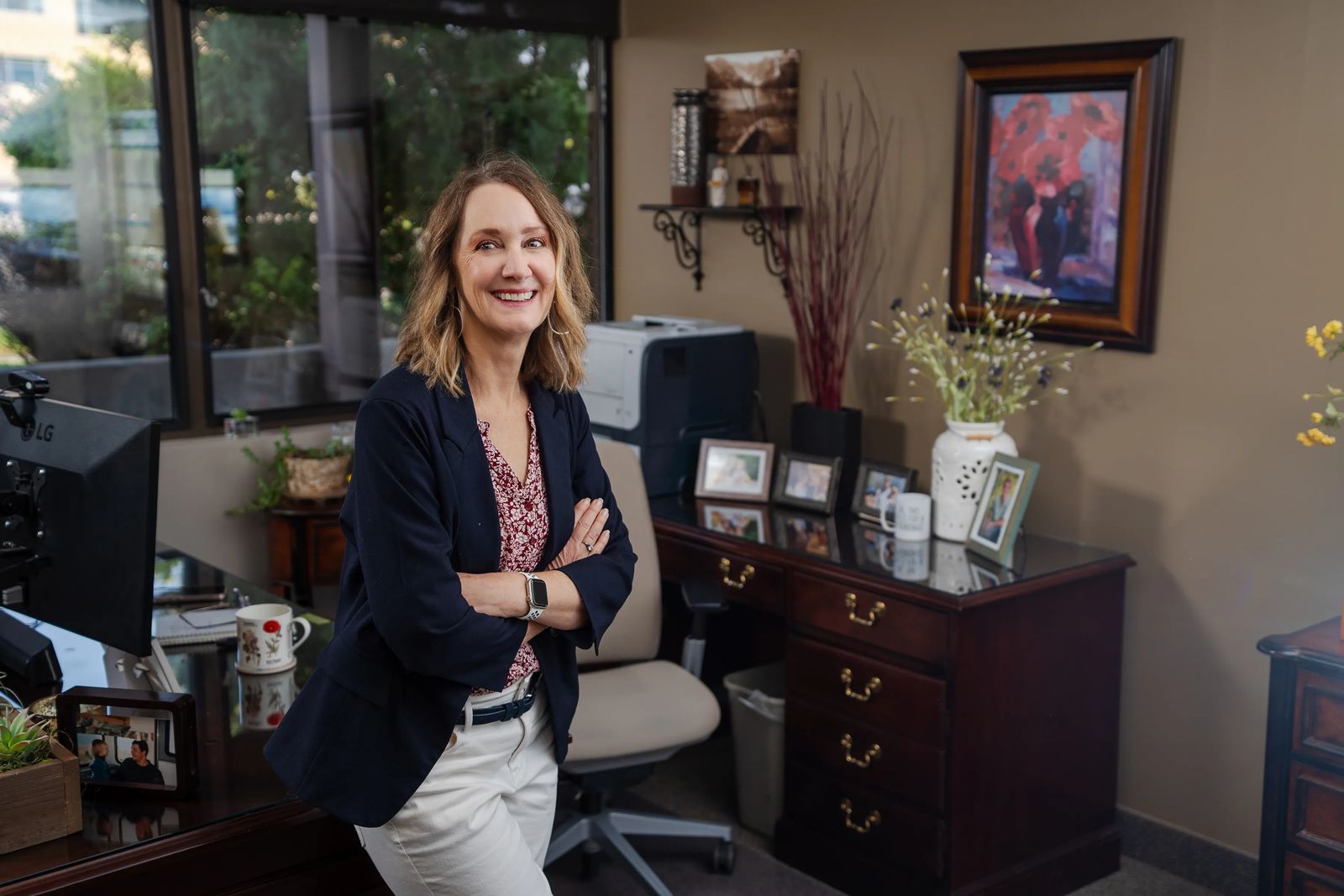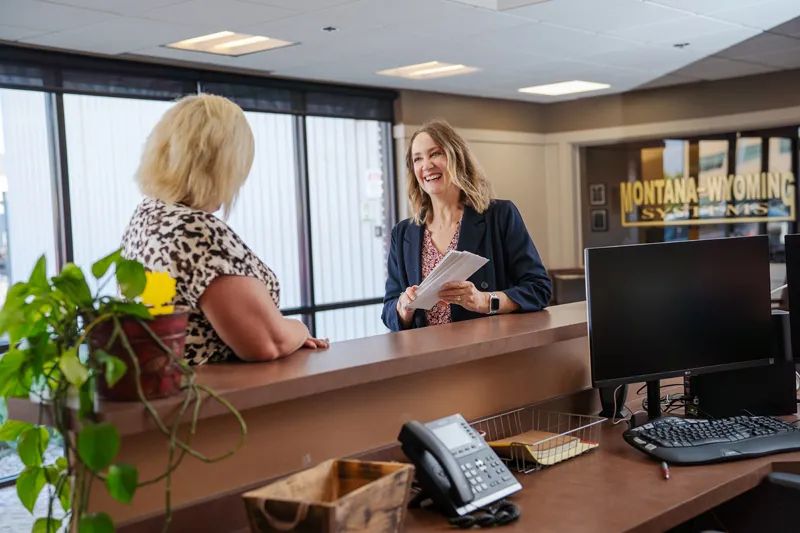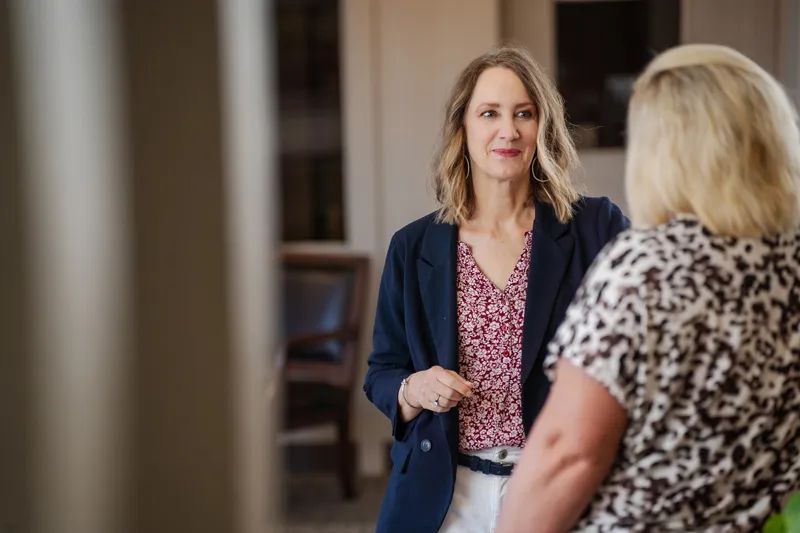
Lori Cote Miller
Changing the Face of Leadership
This is Lori. She’s our new accountant. Do anything she tells you to do.
By any measure, Lori Cote Miller’s introduction to her new colleagues in the accounting department at Yellowstone Electric was awkward.
“I still remember that uncomfortable moment — with all five staff members staring back wondering, ‘Who is this?’” Lori says.
The year was 1994. Lori, though relatively young, had an impressive resume. Several years earlier she had earned an accounting degree from Montana State University. Afterward, Lori moved to Menlo Park, California, to gain experience at a public accounting firm — one of the requirements for becoming a certified public accountant.
She went on to work at a private energy company before making the decision to return to Montana. By this time, not only did Lori have extensive experience in accounting, but she also brought leading-edge knowledge about computers and software — a technology then in its infancy.
Lori smiled back at the accounting staff. As she did, she noticed the department’s lone computer sitting atop a credenza in the corner, unplugged. She would later learn that the office manager “did not like computers,” and felt the current accounting process was working just fine.
But Yellowstone had hired Lori to computerize the entire accounting system.
“I had my work cut out,” Lori says.

Up for the Challenge
A native of Glasgow, Lori, along with her two sisters and two brothers, was raised in a traditional family. Her father worked for the railroad and often traveled out of town. Her mother was a homemaker during Lori’s formative years. From a young age all four siblings were taught the importance of tenacity and hard work.
In school Lori excelled. She was a member of the Honor Society, served on the student council and participated in Keywanettes — a 1970s version of Key Club but for young women.
As a young teenager, Lori cleaned guest rooms for a local hotel one summer. When she turned 15, she got a job at the Glasgow Bakery. Her hard work set the foundation for success in college.
“Growing up my father was somewhat chauvinistic, but that backfired,” Lori says. All three Cote sisters emerged as very strong women who aren’t easily deterred.
web.jpg?fit=outside&w=800&h=533)
If it’s not broken, why fix it?
“You have to remember what things were like 30 years ago,” Lori says.
Excel as a spreadsheet tool was relatively new. Accounting software was in its infancy. In the field, project managers still used paper and pencil to track materials, deliveries, and progress. It took a lot of manual entries to gather numbers on the ground and roll them up into financial reporting.
While the system was functional, Lori saw a huge opportunity to streamline the finance department, moving from “reporting the past” to “directing the future.” But migrating the company from pencil and pad to a mainframe would take more than a kickoff meeting, especially for a smart, attractive, educated woman working in the trades.
Lori needed to prove herself.
Moving past her initial introduction, Lori began by slowly getting to know her new colleagues, learning each person’s role and how the roles interfaced. At the same time, she noted that the owners didn’t share a lot of information with staff. Lori saw that as a misstep.
“Communicating organizational goals and showing how each individual’s job directly contributes success makes people feel good about what they do every day,” she says. “Celebrating success becomes more meaningful.”

Goals vs. Gut Feelings
One of the first changes Lori implemented was the use of a digitized project management worksheet so that managers could see how their projects were performing financially in real time.
“This was a game changer,” Lori says.
Prior to having this tool, managers would base their assessment of whether a project was on track by a gut feeling. While their experience was laudable, numbers tell the truth.
Having instant access to actual project costs across multiple sites created accountability and tighter financial management. Every project fed directly into the company’s overall profitability or loss, meaning leadership had reliable metrics against which to measure planned performance.
But it wasn’t just accounting that needed to make adjustments.

Cultural Changemaker
“I remember walking over to the warehouse manager to ask him something about inventory numbers. He looked at me and said, ‘How old are you anyway?’ I chuckled and asked him, ‘Does that matter?’”
The 1990s was considered a decade of great progress for working women. This was the first generation who had been told they could choose to work outside the home. By 1991, two-thirds of married women with children worked, providing 41 percent of a family’s income.
Despite the mass entry of women into the workplace, certain male-dominated cultural norms that had existed for generations continued in the day-to-day environment. This was especially true in the trades, where the ratio of men to women remained high.
“When I started it was common for the men to call us, ‘the girls.’ That drove me crazy,” says Lori.
Out in the back warehouse, a meeting room had wall calendars featuring photos of women in flirty poses.
“Nothing truly obscene, but daringly close. Those came down.”
And then there was the colorful language.
“I don’t want to come across snobbish — believe me, I can swear as good as anyone. But it was about creating a respectful environment for all,” Lori says.
Overtime, Lori helped decommission the outdated behaviors. She also competently led the company through a major transformation to become a computer-based, high-functioning, strategic enterprise.
In 2016, Lori became CEO.

Building a Sustainable Powerhouse
Today, Yellowstone Electric, with its iconic ketchup-red and mustard-yellow fleet, performs every type of electrical contracting service — commercial, healthcare, airport, industrial, manufacturing, and DOT — even repairing a broken outlet in your home.
Lesser known is the impressive sustainability work the company does with major hydroelectric power plants across the country. Dams are essential for providing electricity to millions of customers. They also require periodic transformer replacements. One such project was recently completed at Glen Canyon Dam in Page, Arizona.
The project, according to an article published by the Bureau of Reclamation, “is a testament to collective efforts towards environmental sustainability, incorporating eco-friendly practices and technologies in managing, delivering and protecting water rights in the American West.”

All in a Day’s Work
Lori is content to remain quietly behind the scenes. For her, the important part is doing the job.
“When my husband and I go to community events, he often wears a Yellowstone Electric cap. People ask him how long he’s worked at the company,” she says, smiling. Occasionally, people ask Lori if Yellowstone Electric had been her family’s business.
“It goes with the territory,” Lori says.











